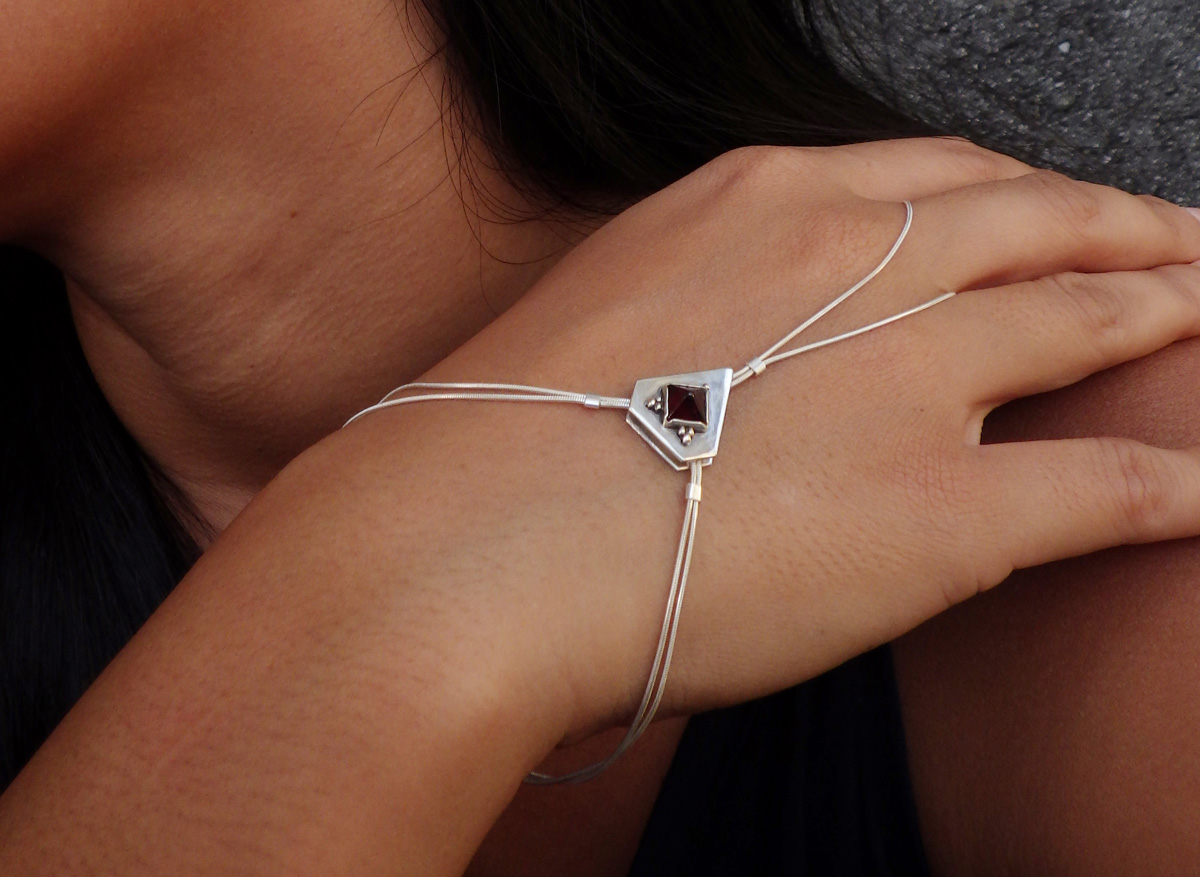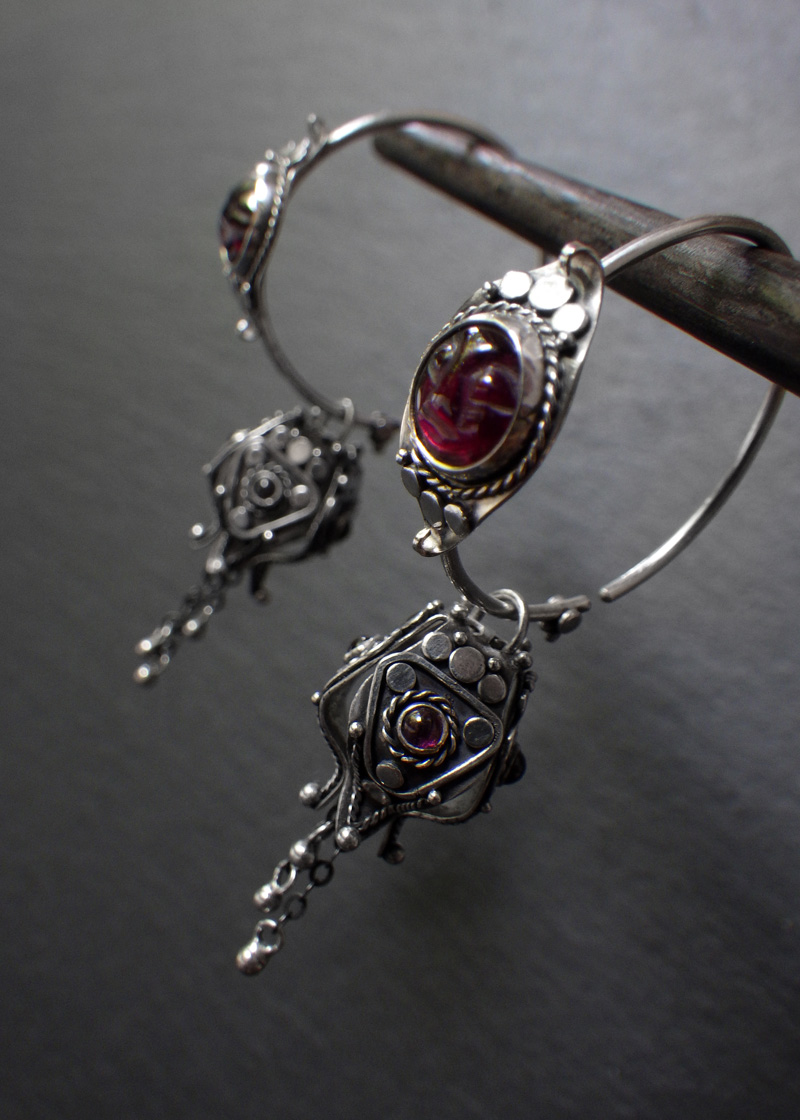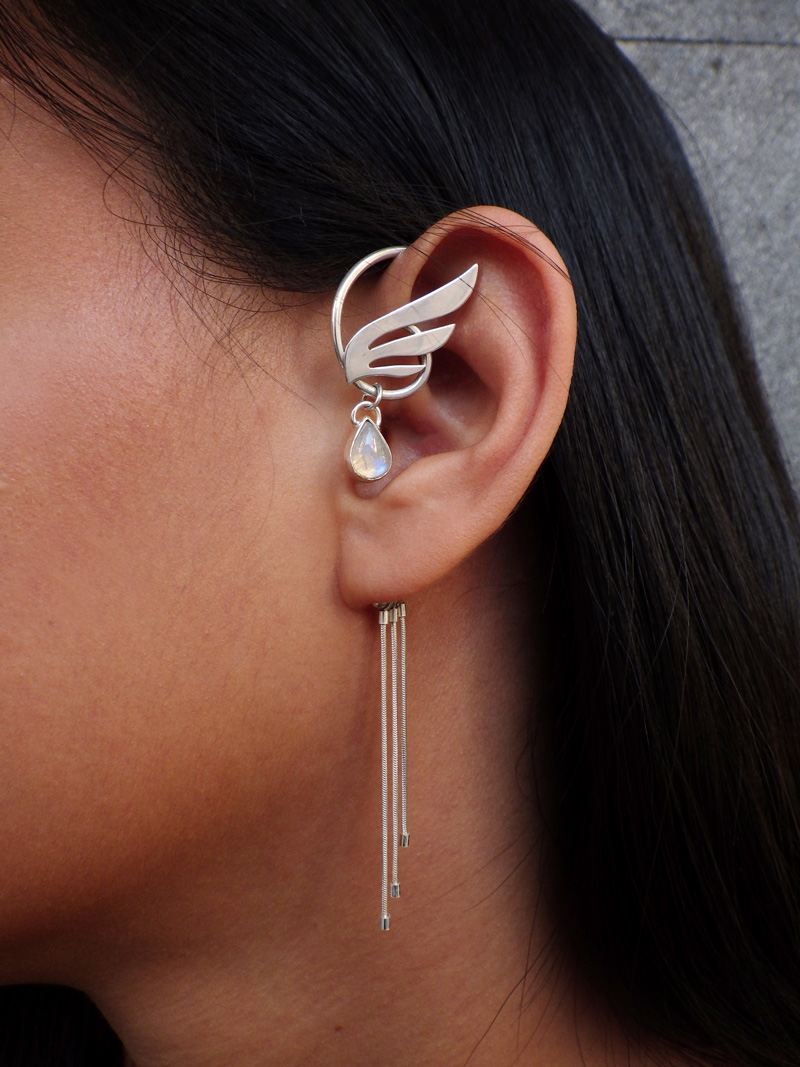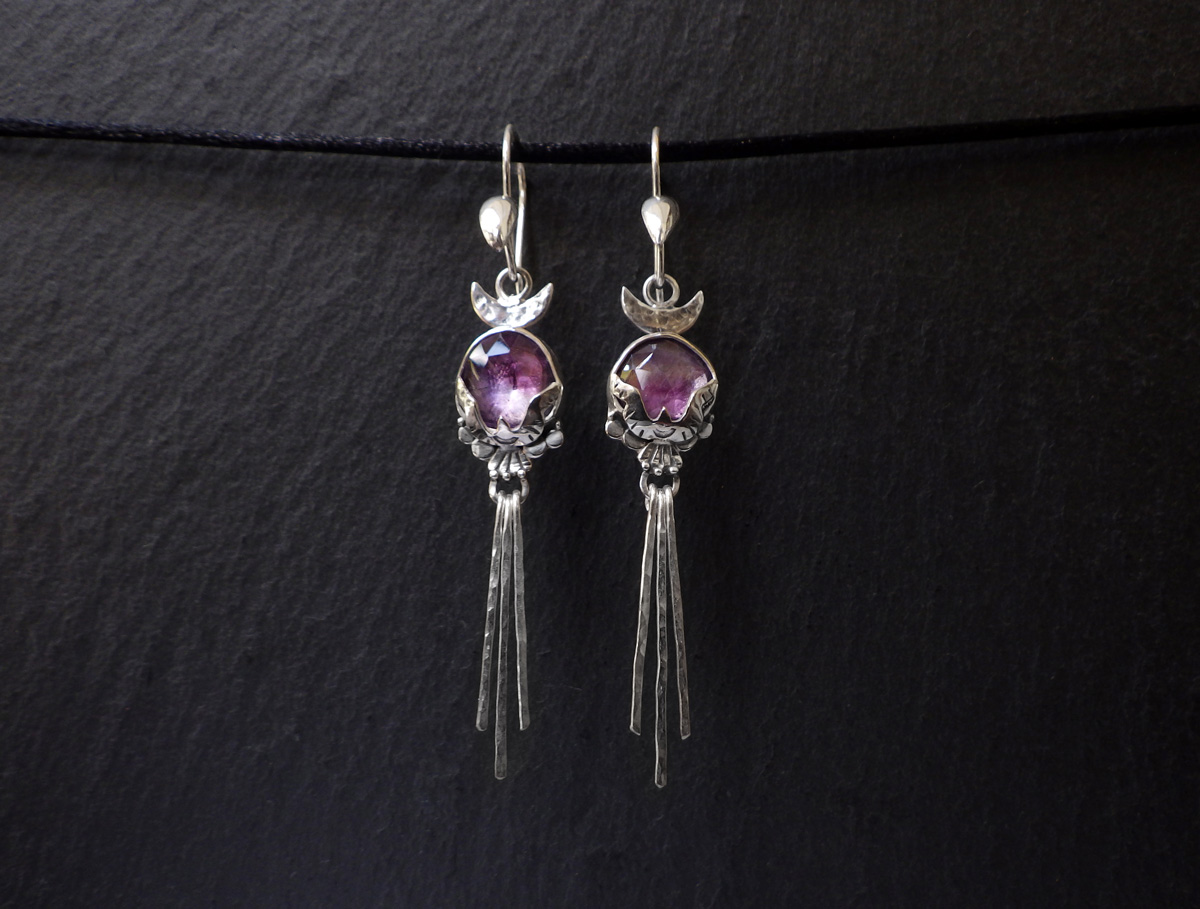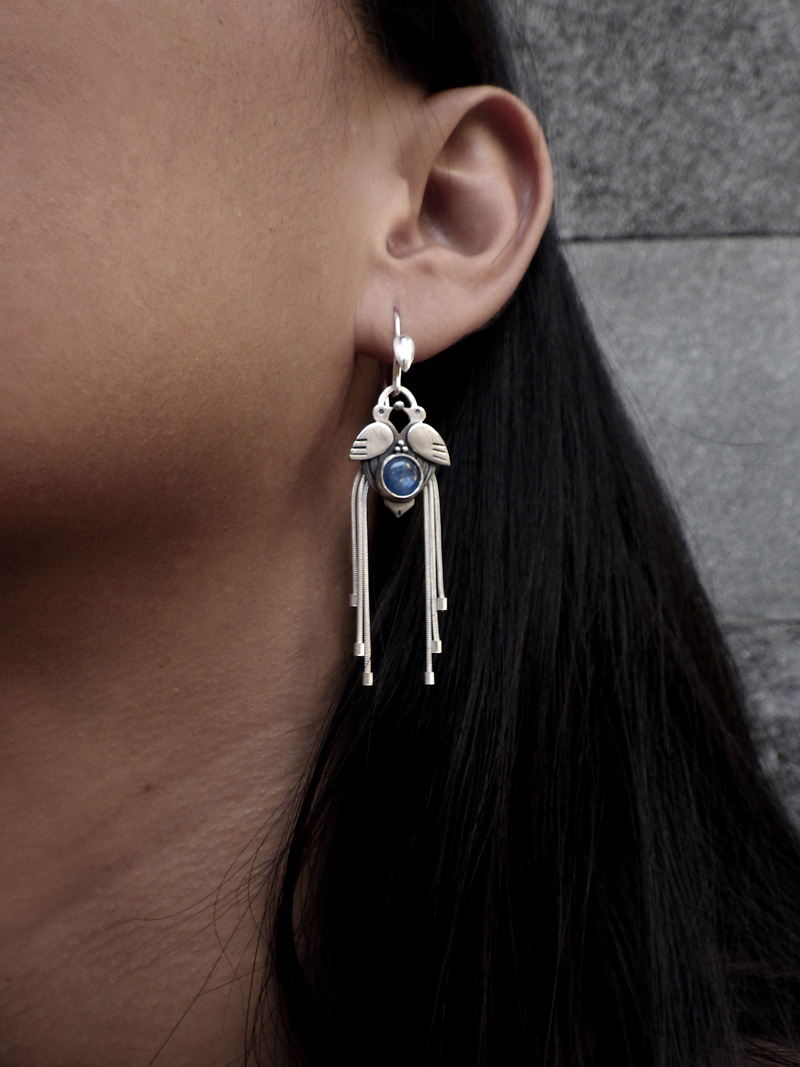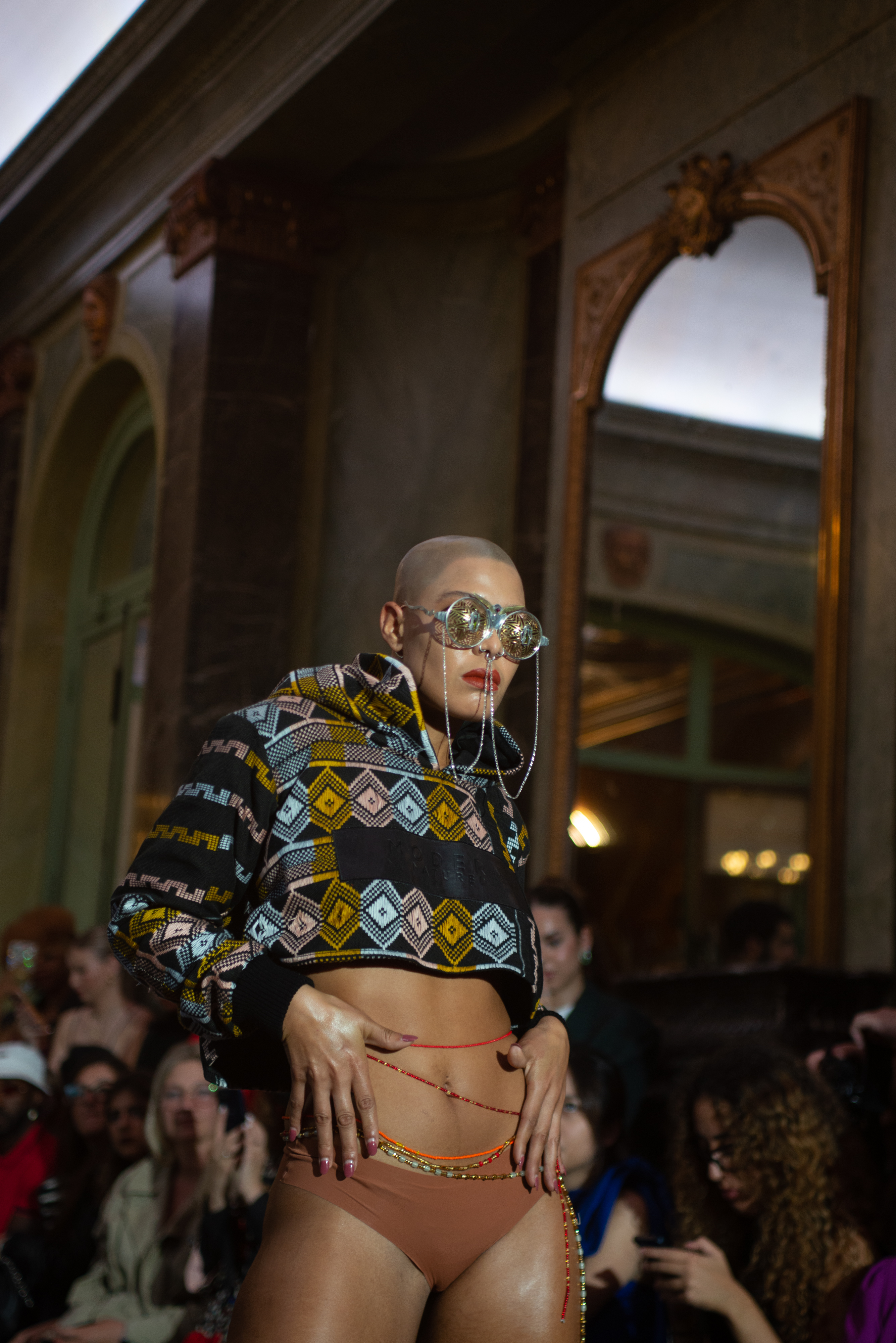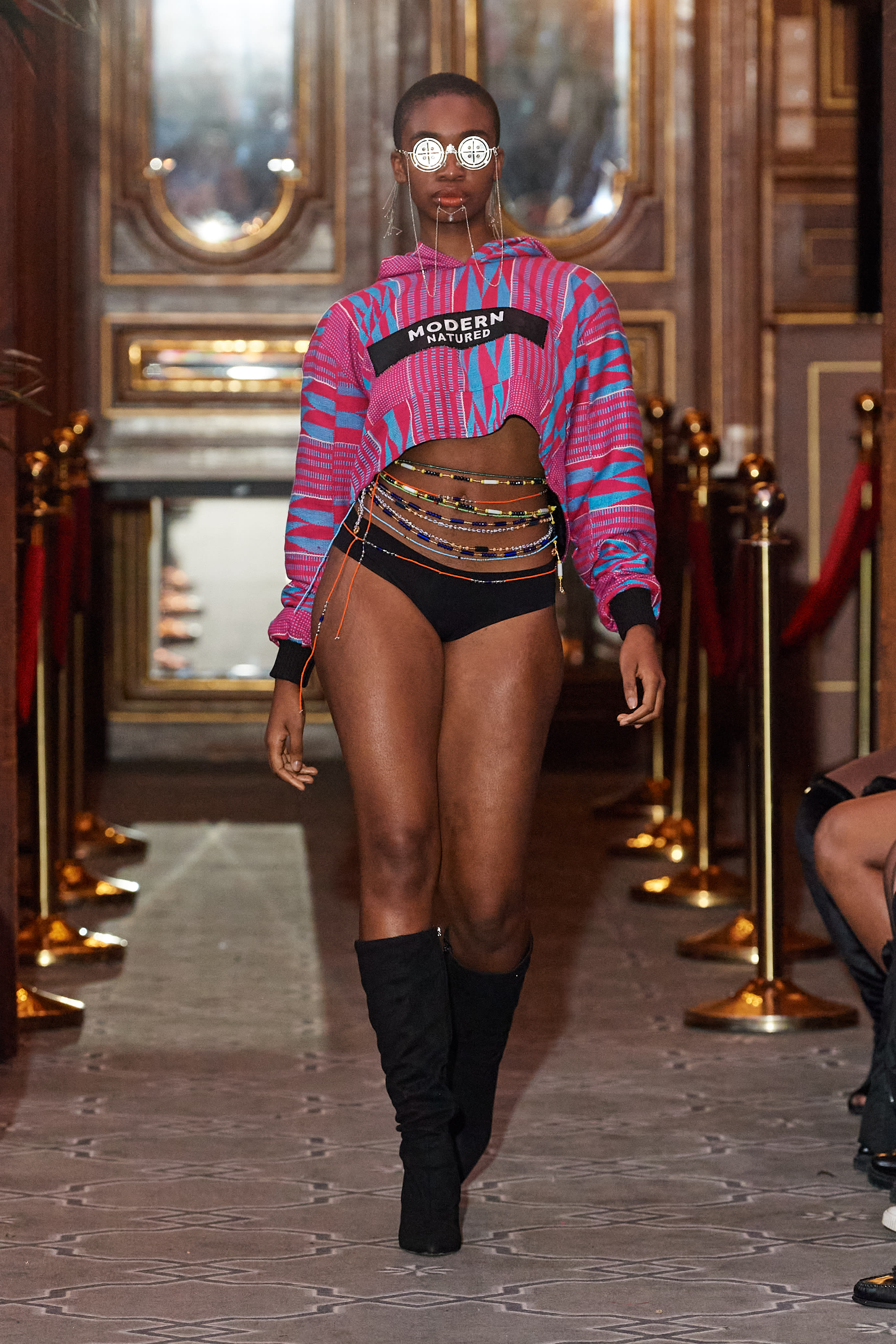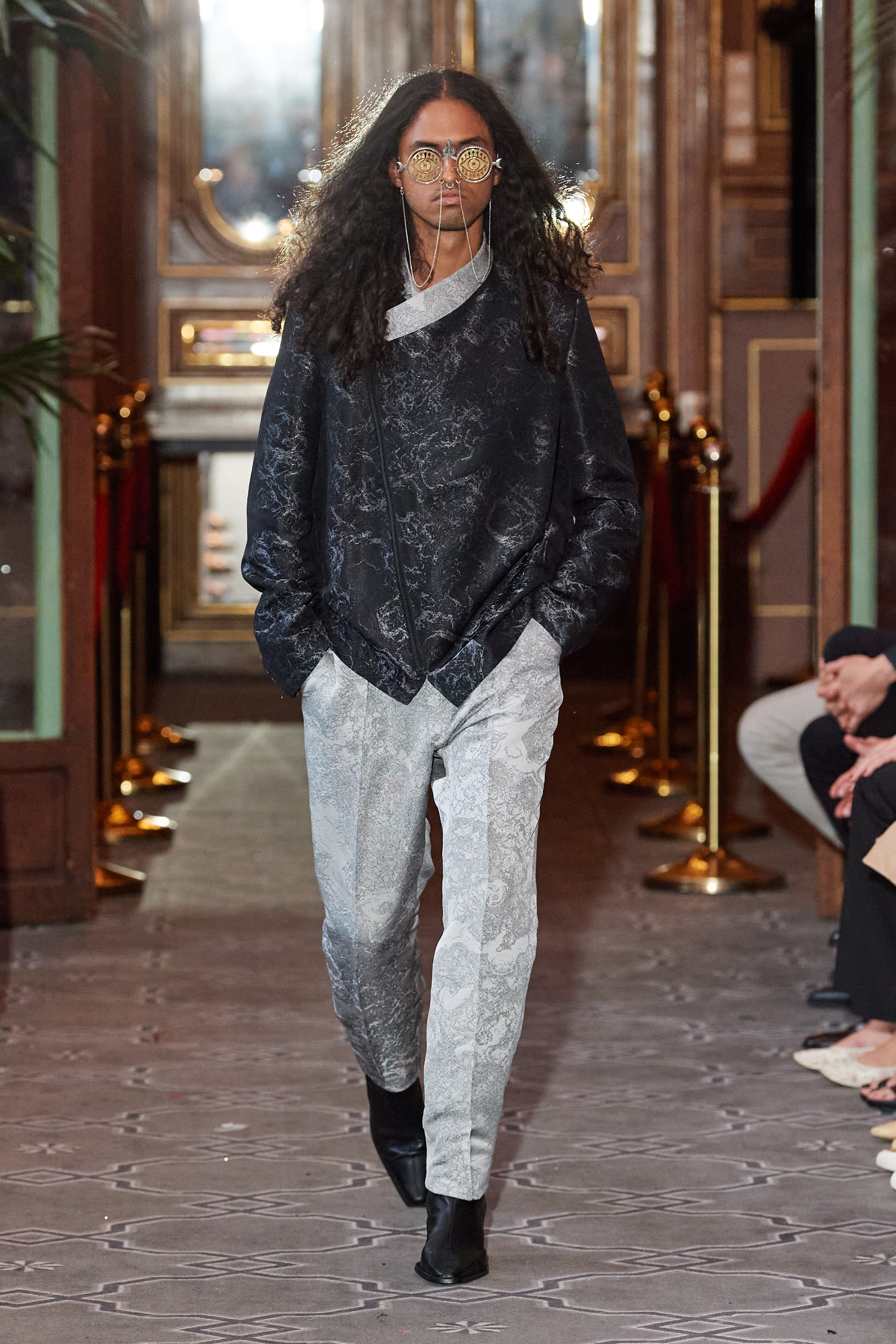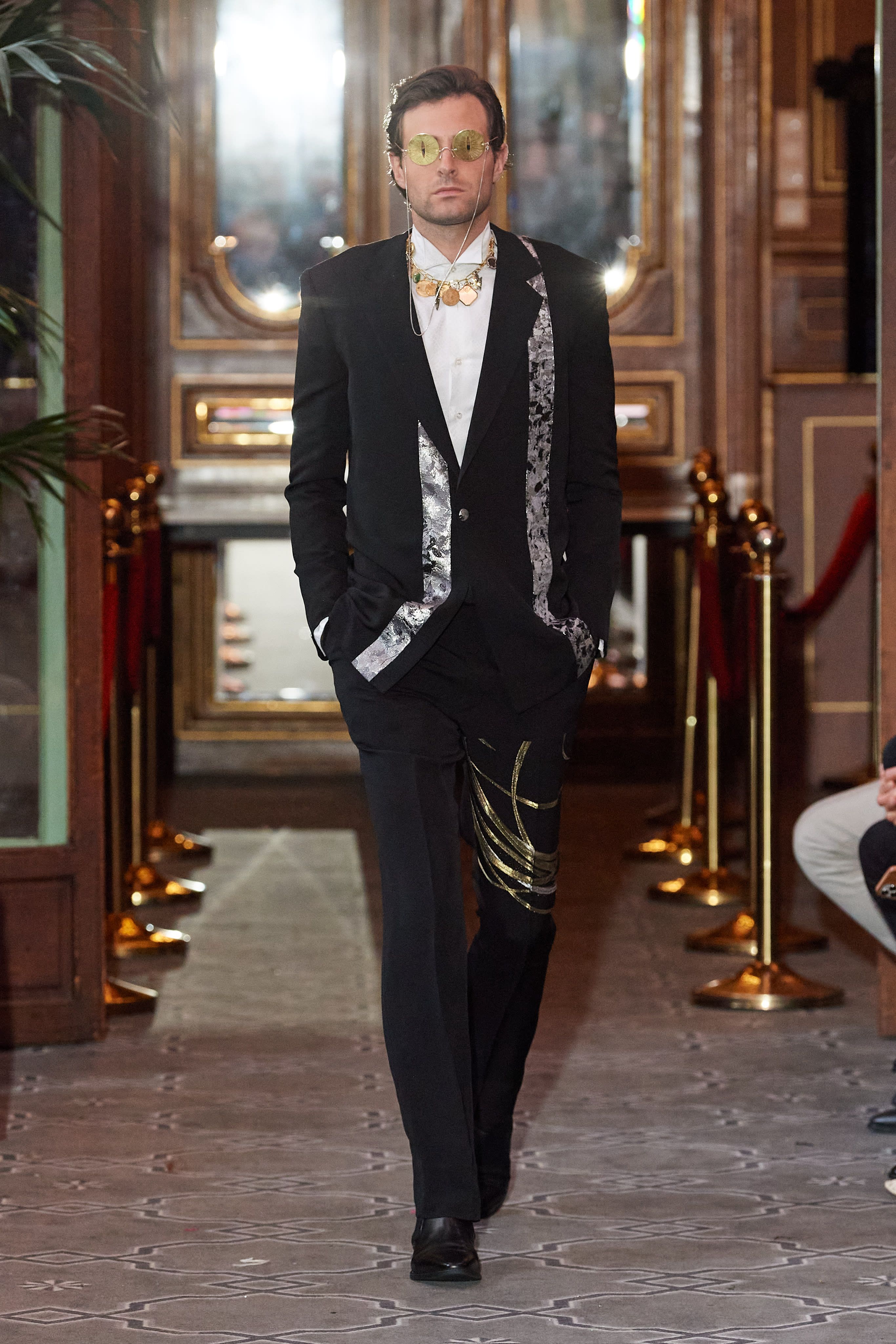Maria Boitunova (Dubrovskaya) is a travel blogger and a jeweler from Yakutia. Her jewelry made its debut at this year’s Paris Fashion Week and Milano Jewelry Week. The jury did not hesitate to call her designer jewelry “objets d’art”. ALROSA sat down with Maria to talk about the connection between her travels and craftsmanship, her bizarre experience at Milano Jewelry Week, and Yakutia’s presence in her jewelry.
Text: Alina Temirchieva
Photo credit: Maria Boitunova (Dubrovskaya)
“Up until 15 years ago, you’d blogged about travel and made a living as a photographer. You’d also made curious forays into taxation and web design. What changed? How did you get into jewelry-making? Was there something that inspired you?”
“I grew up in an artist’s family: my father was a painter and carver. He used to take me to art workshops all the time. He would show me how to work with copper and enamel, and I learned by his example. These outings sparked my interest in jewelry. But it was all written in the stars: my father is from Kentik, a small Yakut village known for its blacksmiths who could do wonders with metal. You could say it’s in the genes (laughs).

Growing up, I was told women couldn’t be artists. They said it was too complicated, and I would have no future as a woman in that industry. They didn’t think, however, that technology opened up more opportunities for people like me. I wanted to focus on art and creation, so I started painting as soon as I got my first PC. Being an undergraduate economics major, I worked as a web designer. I did not care much for economics and finance; after all, I only got into college to please my family. Six years later, I found myself in Saint Petersburg, with the photography job to keep me warm. At that time, I was really into paper handiwork. I used to make peculiar paper dolls that I would sell on Etsy. That’s how I got most of my subscribers, actually. Then I got into travel. This decision spurred my jewelry skills, which I continue to enjoy today.”
“It also brought you to Bali in 2018. So why Bali, exactly?”
“Bali offers a unique crafting experience: batik, ceramics, jewelry. I sought to create something that would last forever — something people would really need. And that was how I discovered silver. After that revelation, I had my work cut out for me. First, there were some technicalities to pin down: I took a workshop to learn the names of materials in Indonesian and stores in the area. Once that was taken care of, I got down to creating.
Bali is steeped in art opportunities. It is impossible to miss its devotion to crafts and artists: dozens of workshops, cheap metal, amazing, talented people, and inspiring surroundings. It is a great place to learn, to get inspiration, and to ask for help.”
“You mentioned you get your inspiration from national motifs. How does a country or a culture influence your work? Which was your deepest inspiration?”
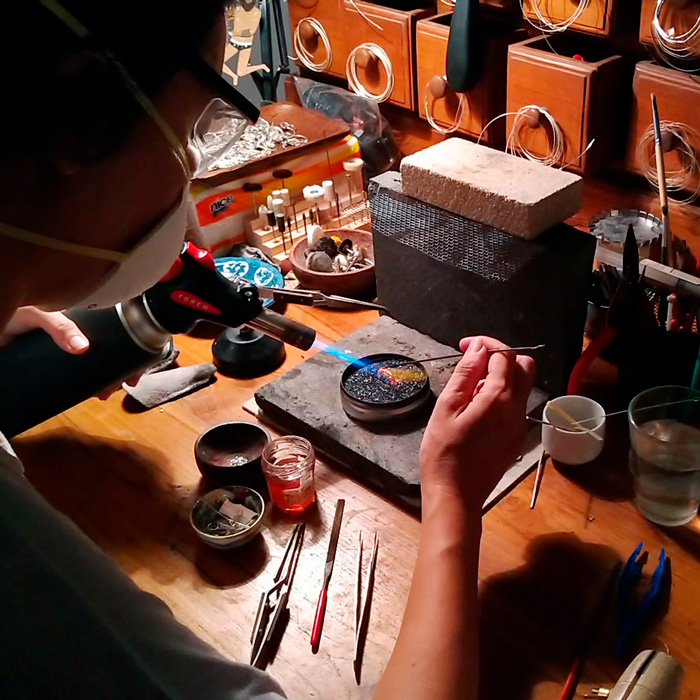
“I tend to live and create in the moment. It’s the people who usually notice national motifs afterwards. Sometimes I would look at a piece and think, ‘This is my love letter to India,’ and people would say how Indian it looks and feels. Those who know I’m from Yakutia always go about Yakut traditions and culture reflecting in my work. This is not my intention. Sometimes I wonder if they only say it because they know I’m a Yakut. What if they didn’t know that? (laughs).
It’s not like I can just decide one day to make something about, say, Thailand. You travel, you absorb architecture, clothing, and traditions; you can’t help but dive into the culture, internalizing it and becoming a part of this country. It triggers new ideas and insights. It’s often out of your hands as a creator: you may have a plan, but you get something completely different in the end.
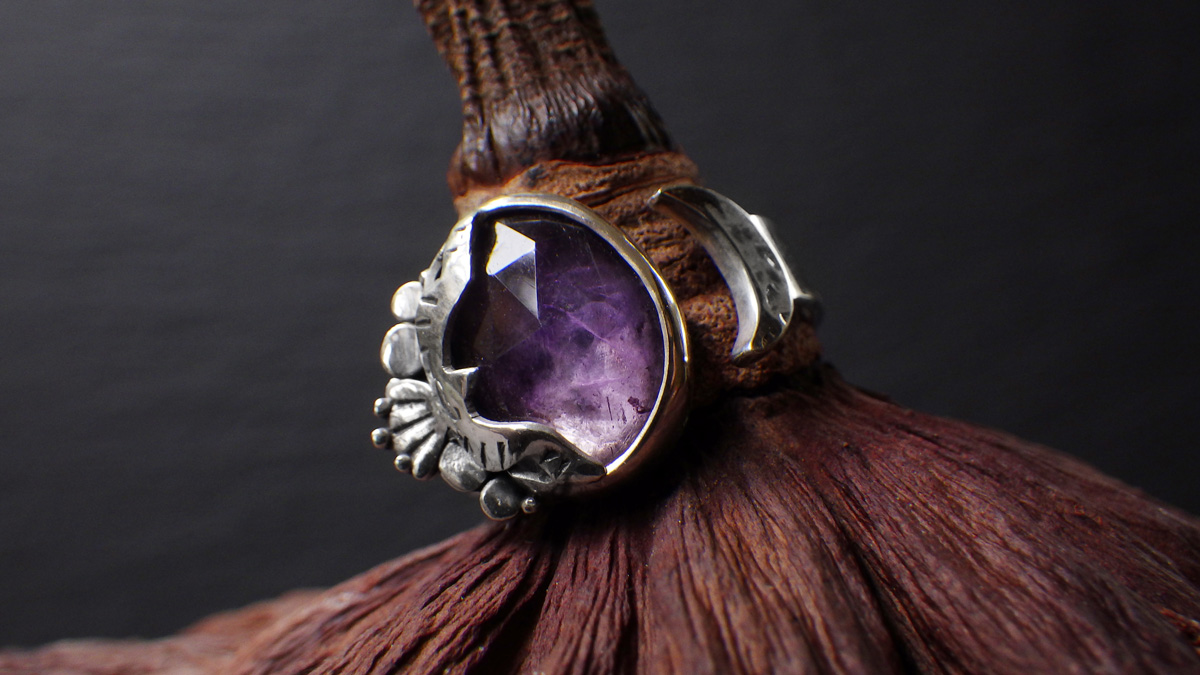
I think India was the most inspiring country I’d visited in my travels. Indian artists have an outlandish sense of style. Their craftsmanship is a one-of-a-kind, albeit deeply traditional, cultural phenomenon. They broaden your vision and inspire you to do something space-related, undoubtedly motivated by ethnic motifs.”
“Could you tell us about your relationship with Northern culture? Is it a catalyst for your art? Or do you aspire for something drastically different?”
“My connection to Yakutia is something else entirely. This is my homeland. My father used to draw landscapes featuring a bird, his signature character. I still remember it, clear as day, a symbol of my artistic childhood. I used it in my illustrations back in the day. Now I allude to it when making jewelry. It all comes together, but unintentionally, almost subconsciously. If I ever venture something to do with Yakutia, I think I’ll go back in time and draw inspiration from old handmade Yakut jewelry with engravings.”
“Do they do things differently in other countries when it comes to jewelry design? What is the difference between Russia and other countries in that regard?”
“Personally, I think our country is a little behind the times. There are two types of jewelers: creators and doers. Doers fix pieces or mindlessly duplicate them; they do not bring any new ideas to the industry. This is the vibe I get from Russian jewelers. I believe most of the pieces made by “creators” reflect what I call the ‘Old Russian yearning’. It is usually the pre-Perestroika generation that seems to draw inspiration from their own babushkas. Even calling it vintage would be far-fetched. Other designs look like their creators haven’t been outside in a while. These are all kinds of trite, very old-fashioned, and outdated ideas, which might change their course if their creator sets foot in the real world and looks at modern jewelry. I could often recognize a Russian creator with no data going in. Make no mistake — Russia has some talented creators, too. But they are hard to come by.”
“You’ve been traveling for a while now. Have you visited any jewelry workshops lately? How do people from your travels feel about jewelry? How do they pick out what they like?”
“I like walking around the city I’m visiting. You see and find many things when you take the time to go for a stroll. For example, a flea market, like the ones I found in Armenia and Croatia. It takes little time to find a jewelry shop and watch a master at work. Sometimes they even offer workshops you can pay to attend.
It is so cute when people find something that speaks to them. I know just the feeling. I’d had some pieces for a couple of years. No one was interested, until someone came along, grabbed it, and clasped it to their heart. “There you are. I’ve been looking for you forever.” It sounds ridiculous, I know. I wouldn’t have believed it myself had I not seen it with my own two eyes. It’s like I always say, ‘Every piece of jewelry always has an owner’.”
“Different countries around the world have their own jewelry etiquette. Which country do you think is the most tradition-leaning? Which one is more into trends?”
“Every country has its customs, traditions, and trends. For example, Indians adore gold and tend to wear it for all occasions. They usually sell silver to tourists. In contrast, Thai people prefer silver. Age often comes into play: when you get older, you tend to gravitate toward traditions. A younger person follows trends.”
“What gems, metals, and materials do you use and why?”
“I use silver as a base material, sometimes brass in glasses, or in jewelry if I’m feeling bold; gold plating on very, very rare occasions. I don’t work with gold. You need other chemicals, solder, and skills. Maybe someday.”
“What do you think of diamonds? Do you use them for your pieces?”
“I did, a couple of times when I made engagement rings for my friends. There was this time when I made a pendant. It was an exclusive order because it involved gray and blue Indian diamonds, which were not cut and polished in the traditional way.
The origin of gems does not really make much difference to me. I only care about the result.”
“Your craftsmanship is amazing. Melting, forging, cutting, soldering, filing, polishing—every single process looks beautiful. If given a chance, we would scroll forever through your social media, watching videos of you making jewelry. Where do you get the patience to do all that?”
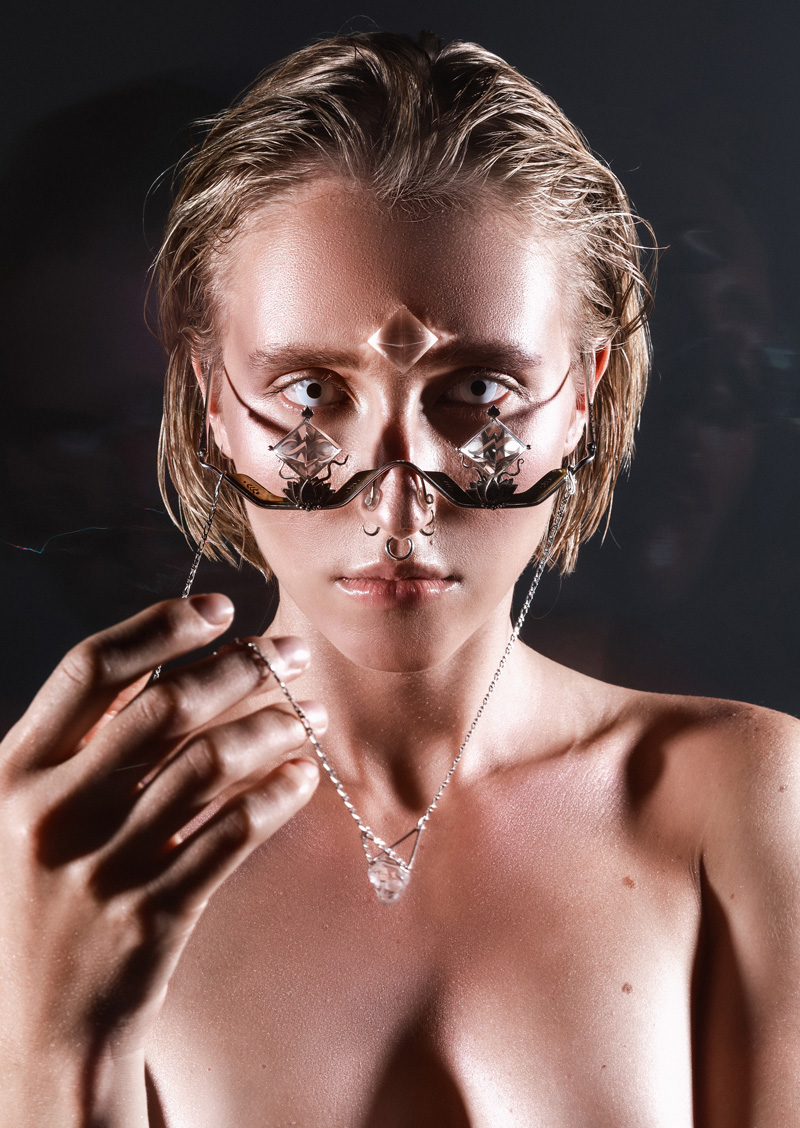
“When I first started, patience was all I could wish for. I had no luck with painting in watercolor or acrylics, let alone with my job as a web designer. I thought I would never get it right, what with my hyperactive nature and all. But when I got to cutting and stitching paper to make dolls, I realized that patience came to me naturally. I was never patient enough to finish drawing another curl for a Photoshop picture. But I always have time and strength for even the smallest piece to be soldered into earrings, even for the 100th time. I think it’s because I actually enjoy doing it. Or maybe my age is beginning to take its toll. I would much rather work in my workshop than go to a party.
I think my work is magical, partly because you might think you know what it’s going to look like, but you’re often wrong. It’s like I’m a middleman. I made something physical, but I was not the one who came up with the idea. It just became part of me.”
“How’d you come up with the glasses collection? They were a separate venture from your classic runway looks, right?”
“It’s not a collection per se. Glasses are not related, and their designs couldn’t be more different.
Actually, my travels inspired me. I just thought one day, ‘Why not make a frame for glasses? I’ll figure something out for the lenses’. So I used brass lenses. And I think people like the result. I certainly do.”
“Your pieces are real objets d’art. Can people wear them?”
&“Yes, I first thought of them as objets d’art. But you can see perfectly well through the slits in the metal lenses. The thing is, silver is both soft and hard. These glasses are not intended to be worn daily. They’re for the world to see—at parties, festivals. Or they can go to private collections.”
“Tell us about your experience with Paris Fashion Week and Milano Jewelry Week. Is it difficult for a freelance jewelry designer to get in? Was this your first time?”
I’ve never been part of such an event before. I hadn’t even applied; they emailed me an invitation. Of course, you had to pay a fee to participate in both events in Paris and Milan. It is all very commercialized. Once selected, designers are asked to pick a “participation package”. It basically includes the terms and conditions of participation, the number of publications, and the coverage the designer is going to get. It was rather expensive, but I thought it would be worth it.
At Paris Fashion Week, I was invited to participate in a show hosted by Flying Solo, a New York-based platform looking for exclusive and independent brands at the beginning of their creation journey.
Milano Jewelry Week featured exhibitions of different art levels and styles, displaying contemporary designs and traditional luxury jewelry alike.
“You said you’d been disappointed with Milan Jewelry Week. Could you elaborate?”
We paid a lot to participate in this event. But it was like the thousands of euros we’d spent went nowhere. I had incredibly high expectations for it. That was a given—a big-scale event such as Milano Fashion Week should have been nothing less than extraordinary. It was a botched job, however: an abysmal hall display, an international award ceremony held in Italian only—can you imagine? In other words, amateur hour. The attendees struggled to understand the hosts, so no one was able to tell who’d won. I think it was outrageous. People now say they want their money back; some even went so far as to threaten the hosts with ruining the next year’s event. I’m happy I got to go because now I can check it off my list. I was not happy with the way they’d managed things, though.
“But now you’ve been invited to NYC Jewelry Week! You seem to have done it all. What is your next goal?”
“I don’t think I’ll be going to that. Right now, I am more interested in my immediate plans to open a studio in Europe and work there. If we’re talking big dreams, I’d like to be able to create freely and keep traveling. I also wish for world peace.”


